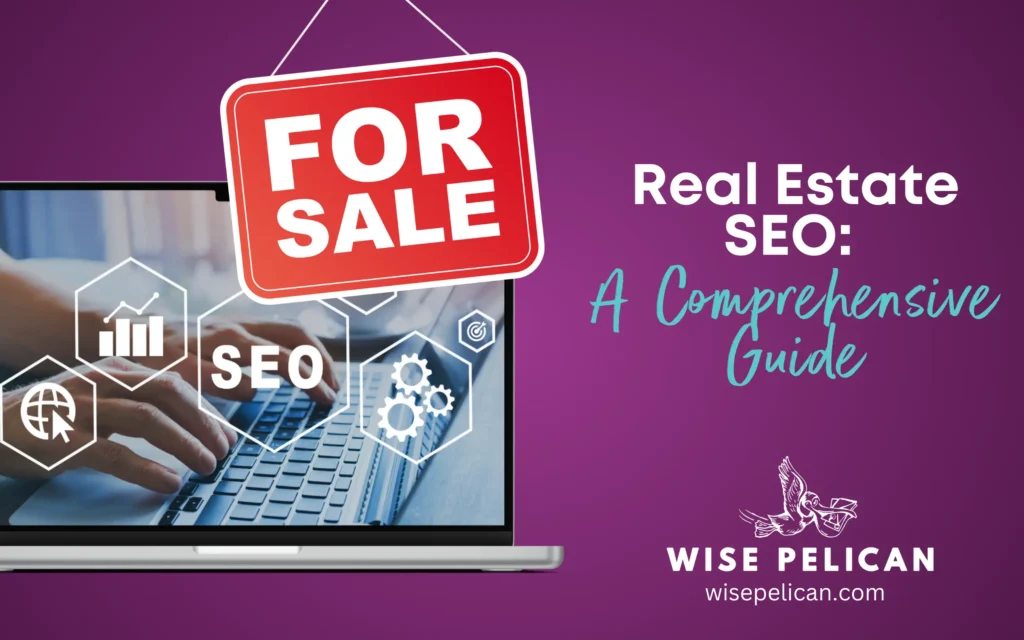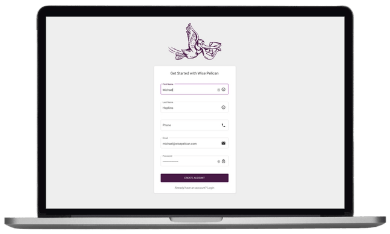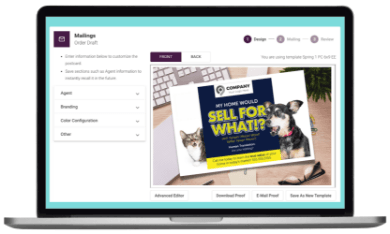If you would prefer to watch a video on real estate SEO, we have included our YouTube video.
Wise Pelican YouTube
In real estate marketing, one term that consistently comes up is “real estate SEO.” People often ask, “What is real estate SEO?” and “How can I rank my website higher and generate more organic leads?”
These questions are just the tip of the iceberg regarding the intricacies of real estate SEO. While it is a complex subject that could easily fill a college course, this article will provide you with a solid foundation and practical insights into real estate SEO (Search Engine Optimization).

The Power of Compelling Copy in SEO
One of the fundamental rules in SEO, dating back two decades, is that “copy is king.” This rule also applies to real estate SEO.
To achieve a high ranking, your website must have a substantial amount of well-written copy. But here’s the catch: longer copy tends to rank higher. While this might be frustrating for some, it’s a reality in SEO.
Crafting Engaging Copy
Creating high-quality copy is key to your real estate SEO strategy. However, it’s important to strike a balance between length and readability. Use Header 1 (H1) and Header 2 (H2) tags to structure your content, making it more accessible to both readers and search engines.
Crafting high-caliber content is the foundation of your real estate SEO approach. Yet, it’s crucial to achieve a balance between the extent of your content and its ease of comprehension.
Using H1 and H2 tags is a logical practice that organizes your content and emphasizes its accessibility for both human readers and search engine algorithms.
Creating exceptional quality content is essential when venturing into real estate SEO. However, the length of your content should maintain its readability. Striking the right balance is vital; content should be substantial enough to deliver valuable information while remaining engaging and understandable to your target audience.
Incorporating H1 and H2 tags enhances the structure and organization of your content. These HTML (Hypertext Markup Language) tags serve as signposts for readers, signaling the hierarchy and importance of different sections within your content.
Here’s why these tags are essential:
- Improved Readability: H1 tags signify the main heading of your content, setting the primary topic. H2 tags indicate subheadings, allowing readers to effortlessly skim through and find the information they are looking for. This hierarchical structure enhances the overall readability of your content.
- SEO Friendliness: Search engines like Google rely on these tags to understand the content’s structure and context. Properly formatted headings give search engines valuable clues about the topic and subtopics covered in your content.
- Keyword Emphasis: Incorporating relevant keywords within your headings, especially H1, reinforces the content’s relevance to specific search queries. This can positively impact your SEO rankings.
Incorporating H1 and H2 tags improves the user experience and aligns your content with SEO best practices. It’s a simple yet effective technique to ensure that your real estate content resonates with both humans and search engines, ultimately contributing to your website’s SEO success.

Leveraging Questions
Google often displays related questions and answers when searching for a query. To capitalize on this, incorporate questions and provide clear solutions within your content. Properly formatted headings and subheadings (H1, H2, etc.) will help Google recognize these questions.
Google has evolved beyond a simple search engine; it now strives to provide users with a comprehensive and interactive search experience.
One way it achieves this is by displaying a section of related questions and answers when you initiate a search query. This feature, often found at the top of search results or within the “People Also Ask” section, serves as a dynamic resource for users seeking in-depth information.
To use the full potential of this Google feature and optimize your content for it, consider the following strategies:
- Incorporate Relevant Questions: These “People Also Ask” sections indicate that Google recognizes user intent to seek answers to related questions. By identifying common questions related to your real estate niche, you can strategically incorporate them into your content. Ensure that these questions align with the topic you’re addressing in your article.
- Provide Clear and Concise Answers: When you include questions in your content, it’s essential to provide clear and concise answers. These answers should be informative and directly address the user’s questions. Consider adopting a structured and informative writing style to be sure your responses are valuable and user-friendly.
- Utilize Proper Heading Tags: Properly formatted headings and subheadings (H1, H2, etc.) are vital in enhancing your content’s structure and organization. When you pose a question within your content, consider using an H2 tag for the question itself and follow it with a well-structured answer. This makes it easier for readers to locate the information they seek and helps Google’s algorithms identify and recognize these questions within your content.
- Encourage Engagement: When users click on the questions, Google often expands to display additional related queries. Encourage user engagement by including these related queries within your content. This can be achieved by addressing these questions naturally within the flow of your article.
- Stay Up-to-Date: Google’s search algorithms continuously evolve, and the “People Also Ask” feature is no exception. Keep an eye on trends and changes in user queries within your real estate niche. Regularly updating your content to reflect the latest questions and answers can help you maintain relevance and visibility in search results.
By proactively incorporating relevant questions and providing clear answers in your content, you not only enhance your chances of appearing in the “People Also Ask” section but also establish your authority and credibility. This effective approach aligns your content with Google’s evolving search features, ultimately improving your website’s visibility and user engagement.
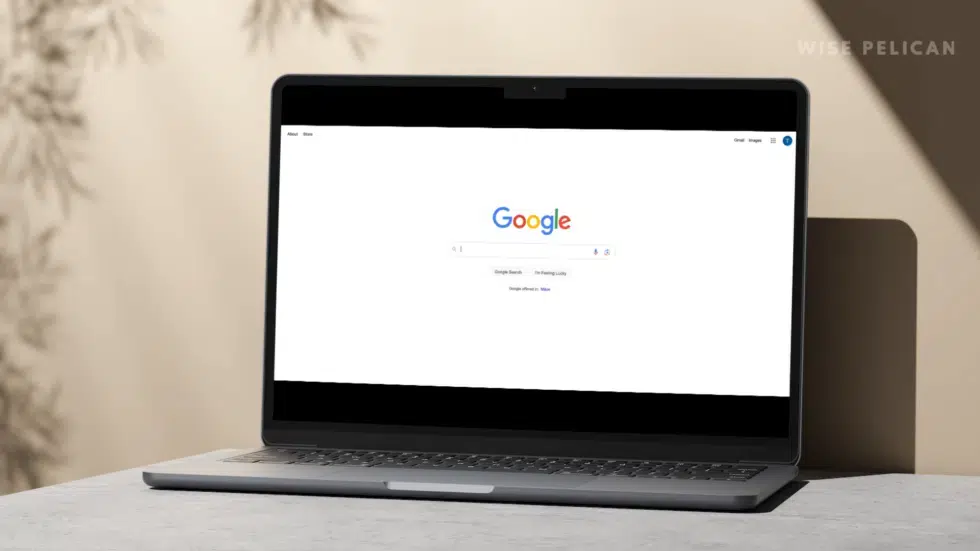
Keyword Research
Before diving into real estate SEO, conduct thorough keyword research. Tools like SEMrush and Ahrefs are invaluable for this purpose. Select a few relevant keywords to focus on in each piece of content. Don’t feel constrained to a single keyword; using multiple related keywords can be effective.
CREATE A FREE WISE PELICAN ACCOUNT
Conduct comprehensive keyword research before setting sail on your real estate SEO journey. It is an indispensable step in optimizing your content for search engines. Keyword research is the foundation upon which your entire SEO strategy is built. To maximize the effectiveness of this process, consider the following key aspects:
- The Significance of Keyword Research: Keyword research is the compass that guides your content creation efforts. It involves identifying the specific words and phrases that potential users enter into search engines when seeking information related to real estate. These keywords are vital as they determine how your content aligns with user intent and how easily search engines can discover it.
- Leveraging Advanced Tools: In the constantly changing landscape of SEO, relying on advanced keyword research tools is crucial. SEMrush and Ahrefs are industry-standard tools that empower you to dive deep into the world of keywords. They provide valuable insights into search volume, competition levels, and related keywords, helping you make informed decisions.
- Diversify Your Keyword Strategy: While it’s essential to identify primary target keywords, don’t limit yourself to a single keyword per piece of content. Embrace a diversified keyword strategy by incorporating multiple relevant keywords. These can include variations of your primary keyword, long-tail keywords, and related terms. This approach broadens your content’s scope and caters to a broader range of user questions.
- Long-Tail Keywords: Long-tail keywords are extended and more specific phrases that often yield less traffic but offer higher conversion potential. They are particularly valuable in the real estate industry, where users frequently use detailed queries when searching for properties or real estate information. Integrating long-tail keywords into your content lets you capture niche audiences and address their needs.
- Competitive Analysis: Effective keyword research involves analyzing competitors’ strategies. Explore which keywords drive traffic to their websites and evaluate the gaps or opportunities within your niche. Identifying keywords your competitors may have overlooked can give you a competitive edge.
- Content Relevance: While keyword research is crucial, it should always align with the relevance and value of your content. Keywords should seamlessly integrate into your articles, blog posts, or property listings, ensuring the content remains informative and engaging for your audience.
- Ongoing Optimization: Keyword research is not a one-time task; it’s an ongoing process. Your keyword strategy should adapt accordingly as search trends evolve and user behaviors change. Regularly revisit your research and update your content to stay current and competitive.
Incorporating a well-researched and diversified set of keywords into your real estate content enhances your SEO and ensures that your website addresses your target audience’s specific needs and queries. It’s the bridge that connects your content with potential clients actively searching for real estate information, properties, and services.
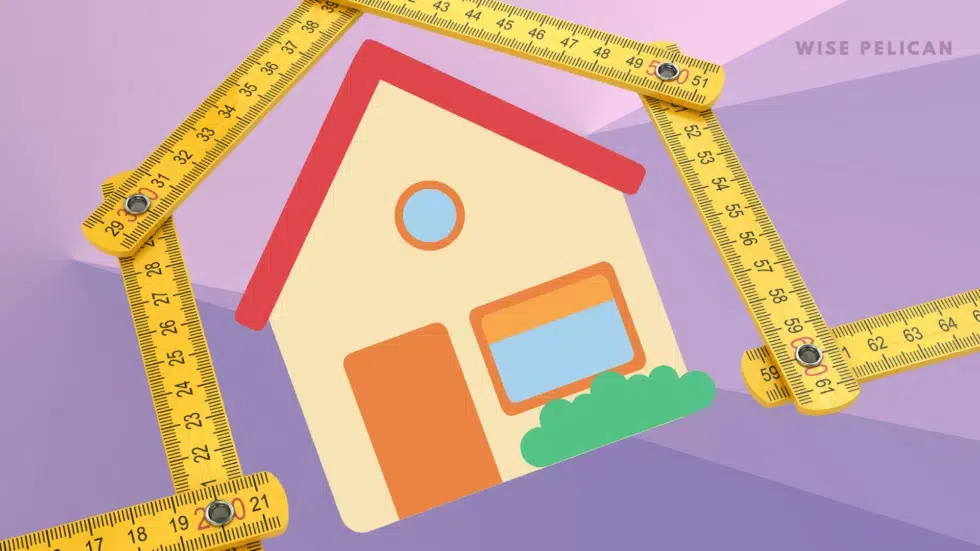
Length of Content
In today’s SEO, longer content tends to perform better. Aim for blog posts with 1,500 words or more.
If you struggle to generate enough content, consider using transcription services like Rev.com. Record your thoughts, transcribe them, and then use AI tools like ChatGPT to expand upon them. The length of your content has become a crucial factor in determining its performance in search engine rankings.
While concise and informative content remains valuable, longer content has gained prominence due to its ability to provide in-depth insights, answer user queries comprehensively, and satisfy search engine algorithms hungry for rich, substantial content.
Here’s why you should consider producing longer content and how transcription services and AI tools can help:
- Comprehensive Coverage: Longer content allows you to explore topics in greater detail, leaving no stone unturned. It enables you to address a broader range of subtopics and nuances within your niche, which can help attract a more diverse audience.
- Higher Keyword Density: Longer articles naturally accommodate a higher density of relevant keywords and phrases, improving your content’s visibility in search engine results pages (SERPs).
- Increased Dwell Time: Dwell time is the time that a user spends viewing a page after clicking a link on a search engine results page. Engaging, lengthy content often keeps users on your website longer, signaling to search engines that your content is valuable and worthy of higher rankings.
- Establishing Authority: Long-form content can position you as an authoritative source within your industry, building trust with your audience and attracting backlinks from other reputable websites.
- Quality of Backlinks: Quality matters more than quantity. High-quality backlinks from authoritative, relevant websites are more valuable than a large number of low-quality backlinks. Google’s algorithms are designed to detect and penalize manipulative link-building practices, such as buying spammy links. Therefore, it’s crucial to focus on building a natural, diverse, and high-quality backlink profile to achieve the best results in real estate SEO.
Leveraging Transcription Services
Generating substantial content can be daunting, especially if you need help to produce enough written material. This is where transcription services like Rev.com come into play. Transcription services allow you to:
- Capture Spoken Ideas: Record your thoughts, insights, or discussions related to your real estate niche. This can be done through voice recordings or interviews with experts in the field.
- Efficient Conversion: Transcription services efficiently convert spoken content into written text, saving you time and effort.
- Access Raw Material: Transcriptions provide raw material that can serve as a foundation for your written content.

Enhancing Content with AI
Once you have the transcribed content, you can use AI-powered tools like ChatGPT to:
- Expand and Elaborate: AI tools can help you expand upon the transcribed content by adding depth, examples, statistics, and further explanations to create more comprehensive articles.
- Improve Coherence: AI can assist in ensuring that the transcribed content flows logically and is cohesive, resulting in a more reader-friendly format.
- Keyword Optimization: AI can help identify opportunities to optimize your content with relevant keywords and phrases, aligning it with your SEO strategy.
- Content Repurposing: AI can aid in repurposing your content into different formats, such as infographics, videos, or social media posts, to maximize its reach and impact.
Incorporating longer content into your real estate SEO strategy can significantly enhance your online visibility and audience engagement.
Transcription services and AI tools provide valuable support in the content creation process, helping you efficiently transform spoken ideas into informative, SEO-optimized written content that resonates with your target audience and impresses search engines.

The Significance of Multimedia
Consider diversifying your content with multimedia elements such as videos and images to enhance your real estate SEO efforts. This engages your audience and aligns with Google’s multifaceted approach to search results.
Embracing Video
Creating informative and engaging videos can significantly boost your real estate SEO. Embed these videos within your blog posts, and consider creating corresponding written content to maximize the amount of copy associated with each video.
Integrating informative and engaging videos into your real estate SEO strategy can be a game-changer in enhancing your online presence and connecting with your target audience.
Here’s how leveraging videos can make a substantial impact and how to complement them with written content for maximum SEO benefits:
- Enhanced User Engagement: Videos uniquely captivate your audience, making complex real estate concepts more digestible and engaging. They allow you to convey emotions, showcase properties, and provide valuable insights dynamically and visually.
- Extended Reach: Video content often enjoys a broader reach as it caters to different learning preferences. It can attract a diverse audience, including those who prefer visual and auditory information over reading.
- Improved SEO Performance: Search engines, especially Google, favor web pages with multimedia elements like videos. Incorporating videos into your content can increase the rankings of search engine results pages.
Embedding Videos within Blog Posts
Embedding videos within blog posts can significantly enhance user engagement by providing visual and interactive content that complements written information. This multimedia approach improves the overall reading experience and helps convey complex ideas more effectively.
- Contextual Integration: To maximize the impact of your videos, embed them within relevant blog posts. Ensure that the video’s content aligns with the article’s topic. This contextual integration helps users and search engines understand the purpose of the video within the content.
- Improved Dwell Time: When users watch videos on your page, it can increase their dwell time. A longer dwell time signals to search engines that your content is engaging and valuable.
Complementing with Written Content
While videos provide a dynamic and visual way to deliver information, they often have time constraints. Consider creating corresponding written content that digs deeper into the topics covered in the video. This written content can provide additional context, insights, and details.
- Enhanced SEO Optimization: Written content associated with videos can be optimized for specific keywords and phrases. This ensures that your content ranks well in search results for relevant search queries.
- Accessibility: Written content serves as an accessibility feature for your audience. Some users may prefer or require written information, such as those with hearing impairments or individuals in environments where watching videos is not feasible.
SEO Benefits
SEO benefits real estate agents by increasing their online visibility, making it easier for potential clients to find them in search engine results, and ultimately driving organic traffic and potential conversions.
- Multifaceted Presence: Combining video and written content creates a multidimensional presence on search engine results pages. Your page can appear in video results, organic search results, and even in featured snippets when the video answers specific user queries.
- Improved Click-Through Rates (CTR): Engaging videos featured in search results can lead to higher click-through rates. Users who see a video thumbnail alongside your content are more likely to click on your link.
- Higher Authority: Regularly incorporating video content can enhance your website’s authority in the eyes of both users and search engines. This can lead to improved search rankings over time.
Video and written content collaboration can significantly boost your real estate SEO efforts. By embedding videos within blog posts and providing corresponding written content, you create a well-rounded user experience that appeals to a broader audience.
This strategic approach enhances your website’s visibility, user engagement, and overall success in the competitive real estate market.
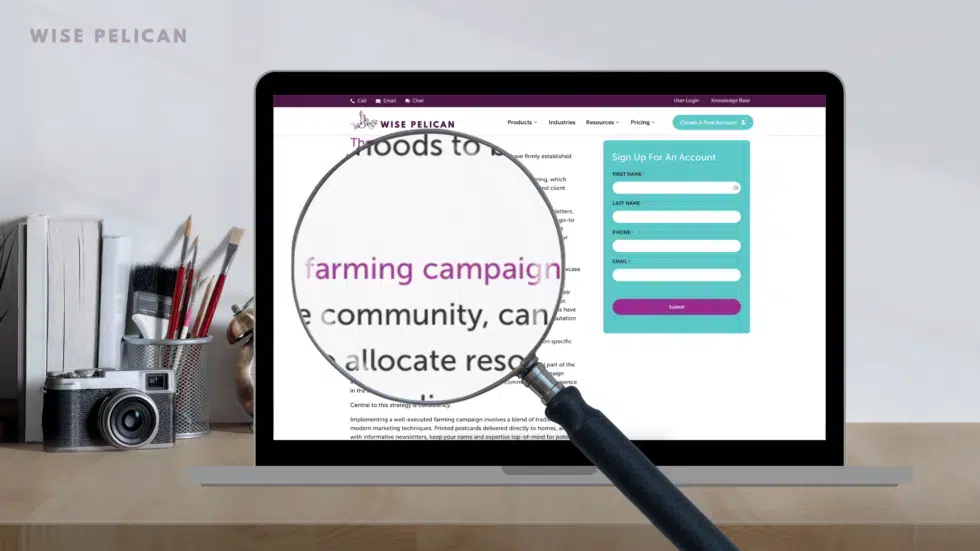
Image Optimization
When you include photos in your blog posts, make sure the images are optimized for SEO. Name your images using relevant keywords before uploading them.
Additionally, use tools like TinyPNG to optimize image file sizes, which improves website loading speed—a crucial SEO factor.
Optimizing images for SEO is the foundation for enhancing your real estate blog’s performance. Images complement your written content and contribute to your overall SEO strategy.
Here’s why image optimization matters and how you can do it effectively:
The Significance of Image Optimization
- Enhanced User Experience: High-quality and relevant images make your blog posts visually appealing and help break up lengthy text, making it easier for readers to digest information.
- Improved SEO Rankings: Properly optimized images can boost your SEO rankings. Search engines take into account the relevance and quality of images when determining the value of your content.
- Faster Page Loading: Optimized images have smaller file sizes, so your web pages load faster. Faster loading times are user-friendly and critical in SEO, as search engines favor speedy websites.
Image File Naming
- Keyword-Relevant Names: Before uploading images to your blog, ensure that the image filenames are relevant to the content and contain keywords you want to target. For example, if you have an image of a luxurious beachfront property, name it something like “luxury-beachfront-property.jpg” instead of a generic filename like “IMG12345.jpg.”
- Hyphens for Separation: Use hyphens to separate words in filenames, as search engines recognize hyphens as word separators. This makes it easier for search engines to understand the content of your images.
Image Compression
- Optimal File Sizes: Large image files can significantly slow your website’s loading speed, negatively impacting SEO.
- Lossless Compression: Many compression tools offer lossless compression, which reduces file sizes without compromising image quality. This ensures that your visuals remain crisp and clear while still loading quickly.
Image Alt Text
Descriptive Alt Text: Every image should have descriptive alt text. Alt text serves as an alternative description for the image and is essential for accessibility. It also provides search engines with context about the image’s content, helping with SEO. Whenever appropriate, include relevant keywords in your image alt text. However, prioritize accuracy and meaningful descriptions over keyword stuffing.
Image Sitemaps
To further optimize your images for SEO, consider creating an image sitemap and submitting it to search engines like Google. Image sitemaps provide search engines with additional information about the images on your site, improving their discoverability.
Responsive Images
Ensure your images are responsive and adapt to different screen sizes and devices. Responsive design is a user experience consideration and an SEO best practice.
Original and Unique Images
Whenever possible, use original and unique images. These can set your real estate blog apart and improve your chances of ranking higher in search results.
Incorporating these image optimization practices into your real estate blog can significantly impact user engagement and SEO. Using keyword-relevant filenames, compressing images for faster loading times, and providing descriptive alt text will improve your blog’s search engine rankings and ensure a more enjoyable and accessible experience for your audience.
The Role of Backlinks
Backlinks are critical to real estate SEO. They contribute to internal and external SEO strategies and help search engines understand the web’s interconnected nature.
Internal Backlinks
Internal backlinks, sometimes called internal links or site navigation links, are links within your website that connect one page to another. These links should use strong anchor text—keywords relevant to the linked content. Creating a network of internal links improves user navigation and SEO.
Here’s why internal backlinks are vital and how to utilize them effectively:
Enhanced User Navigation
- Seamless User Experience: Internal links provide users with a seamless and intuitive way to navigate through your website. Readers can easily access additional information or related topics. When they find relevant links to other pages within your site, it makes their journey on your website more satisfying.
- Reduced Bounce Rates: Well-placed internal links can keep users engaged with your content for more extended periods. When users find valuable information linked to their current viewing content, they are less likely to “bounce” (leave your site immediately).
Improved SEO
- Distributed Authority: Internal backlinks help distribute authority and relevance throughout your website. When you link from a high-authority page to a lower-authority page, you pass some of that authority to the linked page. This can boost the search engine ranking of individual pages.
- Keyword Relevance: When creating internal backlinks, use strong anchor text incorporating keywords relevant to the linked content. This practice reinforces the relationship between the linked pages and provides search engines with additional context about your content.
- Crawlability: Search engine bots use internal links to navigate and index your website efficiently. A well-structured internal linking system ensures that all your pages are accessible to search engines, improving their chances of being indexed and ranked.
Tips for Effective Internal Linking
- Strategic Placement: Place internal links where they naturally fit within the context of your content. The link should add value to the user’s experience and provide supplementary information or resources.
- Keyword Optimization: Use keywords in your anchor text that accurately describe the linked content. Avoid over-optimization or excessive use of keywords, which can be seen as spammy and may harm SEO.
- Diverse Link Sources: Ensure your internal links originate from various sources across your website. This helps evenly distribute authority and relevance throughout your site.
- Regular Maintenance: Periodically review and update your internal links. As your website grows and new content is added, ensure that existing links remain relevant and that new opportunities for internal linking are taken advantage of.
- Mobile Optimization: With the increasing use of mobile devices for browsing, ensure that your internal links are easily clickable and accessible on smartphones and tablets, contributing to a positive user experience.

Avoid Common Pitfalls
Avoiding common pitfalls is crucial to ensuring the success of your website’s SEO efforts and achieving higher rankings in search results.
- Orphaned Pages: Ensure that all pages on your website have at least one internal link pointing to them. Orphaned pages (pages with no internal links) may not get indexed by search engines and won’t contribute to SEO efforts.
- Broken Links: Regularly check for and fix broken or outdated internal links. Broken links can frustrate users and negatively impact SEO.
Incorporating a well-structured network of internal backlinks into your real estate website enhances user navigation and engagement and strengthens your SEO efforts. By strategically placing internal links, optimizing anchor text, and maintaining your internal linking system, you create a more valuable and accessible website for both users and search engines.
External Backlinks
External backlinks come from other websites and are valuable for SEO. It’s essential to build high-quality external backlinks from reputable sources. Avoid using spammy backlinks, which can harm your SEO efforts in the long run.
External backlinks, often called inbound or incoming links, are a vitally important component of a strong SEO strategy for your real estate website. These links originate from other websites and are essential in establishing your site’s authority, credibility, and visibility within search engine rankings.
Here’s why external backlinks are crucial and how to acquire them effectively while avoiding harmful practices:
Authority and Credibility
- Third-Party Validation: External backlinks serve as a form of third-party validation for your website. When other reputable websites link to your content, it signals to search engines that this content is credible and trustworthy.
- Enhanced Authority: The more high-quality external backlinks your website receives, the more authoritative it appears in the eyes of search engines. This can lead to improved rankings for your real estate related keywords.
Expanded Reach and Traffic
- Wider Audience: External backlinks introduce your website to a broader audience. When users click these links, they are directed to your site, potentially increasing your traffic and expanding your reach within the real estate niche.
Effective Link Acquisition Strategies
- Guest Blogging: Collaborating with reputable real estate websites and blogs through guest blogging is an excellent way to earn external backlinks. Write informative and relevant articles for these sites, and in return, you can include a link to your website in your author bio or within the content.
- Content Promotion: Create high-quality, informative, and shareable content on your website. Outreach to industry influencers and real estate websites and inform them about your valuable content. If they find it relevant to their audience, they may link to it in their own articles.
- Resource Link Building: Develop valuable resources such as real estate guides, market reports, or infographics. Promote these resources to other websites or organizations in your niche, encouraging them to link to your informative content.
- Build Relationships: Building relationships with fellow real estate professionals, bloggers, and web admins can lead to organic link opportunities. Networking and collaborating within your industry can result in natural link-building opportunities.
Pitfalls to Avoid
- Buying Spammy Backlinks: One of the most detrimental practices to avoid is purchasing spammy backlinks. While it may seem like a quick fix, buying low-quality or irrelevant backlinks can severely harm your website’s SEO in the long run. Search engines are skilled at detecting unnatural link profiles, and penalties may result from such actions.
- Excessive Anchor Text Optimization: While it’s essential to include relevant keywords in your anchor text, over-optimizing anchor text with exact-match keywords can raise red flags with search engines. Ensure your anchor text appears natural and contextually relevant to the linked content.
- Ignoring Link Quality: Quality is one of many factors to consider; the quality of external backlinks matters significantly. Links from authoritative and reputable websites hold more value than numerous links from low-quality sources.
Monitor and Maintain
Periodically audit your external backlinks to identify and remove any spammy or harmful links that you may have unintentionally acquired.
Link building is an ongoing process that should be incorporated into your long-term SEO strategy. Regularly seek new opportunities for building high-quality external backlinks.
External backlinks are a powerful asset for your real estate SEO efforts. When obtained through ethical and strategic practices, they enhance your website’s authority, credibility, and visibility within search engine rankings.
However, avoiding harmful practices like buying spammy backlinks and prioritizing acquiring high-quality, relevant links from reputable sources is crucial to safeguarding your website’s long-term SEO success.

Real Estate SEO vs. Paid Ads
Choosing between real estate SEO and paid advertising depends on your goals and timeline. SEO is a long-term strategy, while ads can deliver immediate results. Here’s a comparison to help you decide:
Real Estate SEO: Building Blocks of Wealth
Real estate SEO is comparable to building blocks for long-term wealth. It takes time to rank, but the leads generated are typically of higher quality. It’s a gradual process that can eventually lead to substantial organic traffic.
Much like constructing a solid foundation for a long-lasting structure, real estate SEO is a gradual and systematic process that promises to build long-term wealth for real estate professionals.
This approach to online marketing is characterized by its steady and sustainable nature, offering numerous advantages for those willing to invest the time and effort required.
Here’s a closer look at why real estate SEO is often likened to building blocks for long-term wealth:
Time-Tested Investment
- Patience Pays Off: Real estate SEO demands patience and a long-term perspective. Just as property investments appreciate over time, the benefits of SEO accumulate gradually. While immediate results are rare, the return on investment (ROI) grows significantly as your website climbs the search engine rankings.
- Quality Leads: One of the distinct advantages of real estate SEO is the quality of leads it generates. Unlike some quick-fix marketing strategies, SEO attracts potential clients actively seeking real estate services. These prospects are often better informed and more motivated, making them valuable targets for conversion.
Gradual, Yet Substantial Progress
- Incremental Growth: Real estate SEO involves creating and optimizing content, building backlinks, and fine-tuning various on-page and off-page factors. Each step represents a building block contributing to the gradual growth of your website’s authority and visibility.
- Steady Organic Traffic: As your website rises in search engine rankings, you’ll notice a steady increase in organic traffic. This is traffic that arrives on your site without the need for paid advertising. Over time, this consistent flow of visitors can translate into substantial exposure and potential leads.
Sustainable Competitive Advantage
- Long-Term Stability: Effective real estate SEO can give your website a competitive advantage. Once you’ve established a solid online presence and earned a reputable status, it becomes more challenging for competitors to beat you in search engine rankings.
- Cost-Effective Marketing: Real estate SEO can be highly cost-effective in the long run. While the initial investment in SEO services and content creation can be significant, ongoing maintenance and optimization are more economical than paid advertising campaigns.
Adapting to Changing Markets
- Resilience in Market Shifts: Real estate markets can experience fluctuations and shifts. A well-optimized real estate website is adaptable and can weather changing market conditions. Updating your content and SEO strategy to reflect market trends allows you to remain relevant and attract quality leads.
Comprehensive Online Presence
- Multi-Faceted Approach: Real estate SEO encompasses various elements, including blog posts, videos, images, and other content formats. This multi-faceted approach allows you to establish a comprehensive online presence, appearing in search results and video platforms, image searches, and more.
Real estate SEO is a long-term investment in your online presence and brand authority. Constructing a stable and lasting structure requires patience, dedication, and a strategic approach.
Over time, as you add building blocks one after another, your real estate website will rise in search engine rankings.
Paid Real Estate Ads: Immediate Impact
Paid ads can quickly generate leads, immediately boosting your business. However, the quality of leads may vary. It’s an effective way to get started while waiting for your SEO efforts to gain traction.
The powerful interplay between paid advertising and search engine optimization in real estate marketing offers real estate professionals valuable strategies to enhance their online presence and generate leads.
Let’s take a closer look at the advantages of paid advertising and how it complements your broader marketing strategy:
Quick Lead Generation
- Immediate Impact: Paid advertising, such as Google Ads or social media campaigns, can be set up swiftly and start delivering results within a short timeframe. This makes it an excellent option for real estate professionals looking for rapid lead generation and increased visibility.
- Time-Sensitive Opportunities: Timing is often crucial in a fast-paced real estate market. Paid ads allow you to capitalize on time-sensitive opportunities, such as promoting a newly listed property or announcing a special offer.
Lead Quality Variation
- Varied Lead Quality: While paid advertising can swiftly bring in leads, the quality of these leads may vary. Some leads may be highly motivated and ready to convert, while others may be more exploratory in nature. Managing and nurturing these leads effectively is essential to maximize their potential.
Complementing SEO Efforts
- Bridge the Gap: SEO is a long-term strategy that requires time to gain traction and deliver consistent organic traffic. Paid advertising serves as a bridge that fills the gap between the initial launch of your real estate website and the point at which your SEO efforts begin to yield significant results.
- Strategic Synchronization: A well-balanced marketing approach involves synchronizing your paid advertising campaigns with your SEO strategy. For instance, you can use paid advertising to promote content created for SEO, ensuring immediate visibility while contributing to long-term SEO goals.
Diversify Your Reach
- Multi-Platform Marketing: Paid advertising allows you to diversify your online presence across multiple platforms. You can target potential clients on search engines, social media, and other online spaces, increasing your brand’s visibility.
Measurable ROI
- Trackable Results: Paid advertising platforms provide powerful analytics tools that enable you to track the performance of your campaigns. This data-driven approach allows you to measure your ad spends return on investment (ROI) and make informed adjustments to optimize your results.
Cost-Effective Allocation
- Budget Control: Paid advertising offers flexibility in terms of budget allocation. You can adjust your spending based on your goals and the performance of your campaigns. This control allows you to maximize the effectiveness of your advertising budget.
Targeted Marketing
- Precise Audience Targeting: Paid advertising platforms offer advanced targeting options, allowing you to reach specific demographics, interests, and geographic areas. This precision ensures that the most relevant potential clients see your ads.
While SEO is a fundamental and long-term strategy for real estate professionals aiming to establish a solid online presence, paid advertising is a valuable complement.
Paid advertising offers the advantage of quick lead generation, flexibility in budget allocation, and precise audience targeting.
By strategically combining paid advertising with your SEO efforts, you can create a comprehensive marketing strategy that delivers immediate results and sustainable long-term growth in real estate’s competitive industry.
Conclusion
In real estate SEO, success hinges on creating high-quality, lengthy copy, optimizing multimedia content, and strategically building backlinks. Your approach should balance quality and quantity while ensuring your website effectively guides visitors to take action.
Tap into the expertise of Wise Pelican and transform your real estate business today! Wise Pelican provides tailored solutions for real estate postcards and letters that can fuel your growth. Don’t miss out on these essential tools for success—act now with Wise Pelican!
